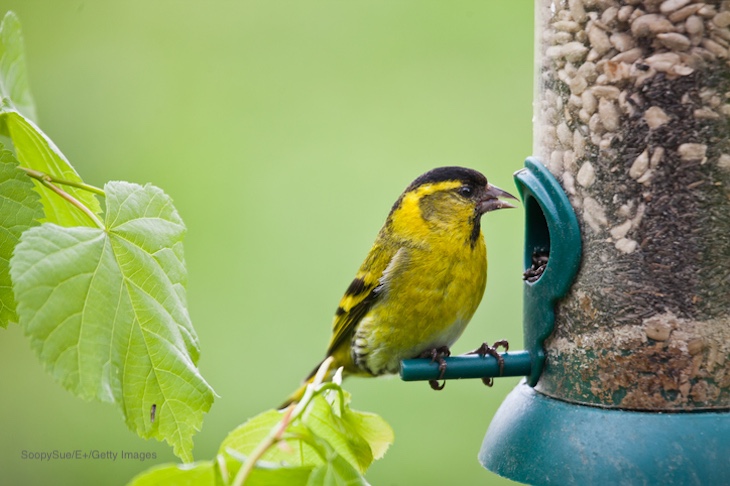There has been a “dramatic increase” in Washington state in the population of pine siskins, a tiny migrating bird. A shortage of conifer cones, the typical food for this bird, has caused this increase. And they are eating at backyard feeders. There has been an explosion of Salmonella infections among those birds. The Washington Department of Fish and Wildlife (WDFW) recommends that people remove bird feeders to stop this Salmonella outbreak.

All bird species are susceptible to this bacteria that can also threaten human health.
Birds are a source of Salmonella and have been known to infect crops with their droppings. Backyard bird feeders are a particular risk since people have to handle them frequently. And the birds may contaminate food in backyard gardens.
The Progressive Animal Welfare Society (PAWS) is also advising people to remove bird feeders even if you haven’t seen sick birds. The agency is seeing more than one sick bird a day. The statement from them reads, “Usually, we recommend removing feeders for a few weeks when a sick bird is found nearby and cleaning the area thoroughly. However, the flocks are so large and cases so frequent right now, we recommend removing your feeders even before you detect a sick bird until the irruptive migrants move on.”
WDFW veterinarian Kristin Mansfield said in a statement, “The first indication of the disease for bird watchers to look for is often a seemingly tame bird on or near a feeder. The birds become very lethargic, fluff out their feathers, and are easy to approach. This kind of behavior is generally uncommon to birds. Unfortunately, at this point there is very little people can do to treat them. The best course is to leave the birds alone.” She added, “Birds use natural food sources year-round, even while also using backyard bird feeders, so they should be fine without the feeders.”
The feeders should be removed for at least three weeks. After you remove bird feeders clean them with soap and water. Keep it out of your home. Disinfect the feeder with a 10% bleach solution. Then wash all nearby surface sand rake the around around the feeder.
Wear gloves when you are working with the feeder. And wash your hands carefully and thoroughly with soap and water after you have finished. If you see a sick bird you can report it using this form from WDFW.





we have 10-20 sick birds here. at least five dead on the ground. they are definitely fluffed up and lazy. l had 18 feeders then l had to take them down. the birds were flocking here. l had at least 150 birds. they were spreading Salmonella fast. so taking down your feeders is a great option to help slow the spread.
Oh my goodness that is so sad. I’m glad you took the feeders down.